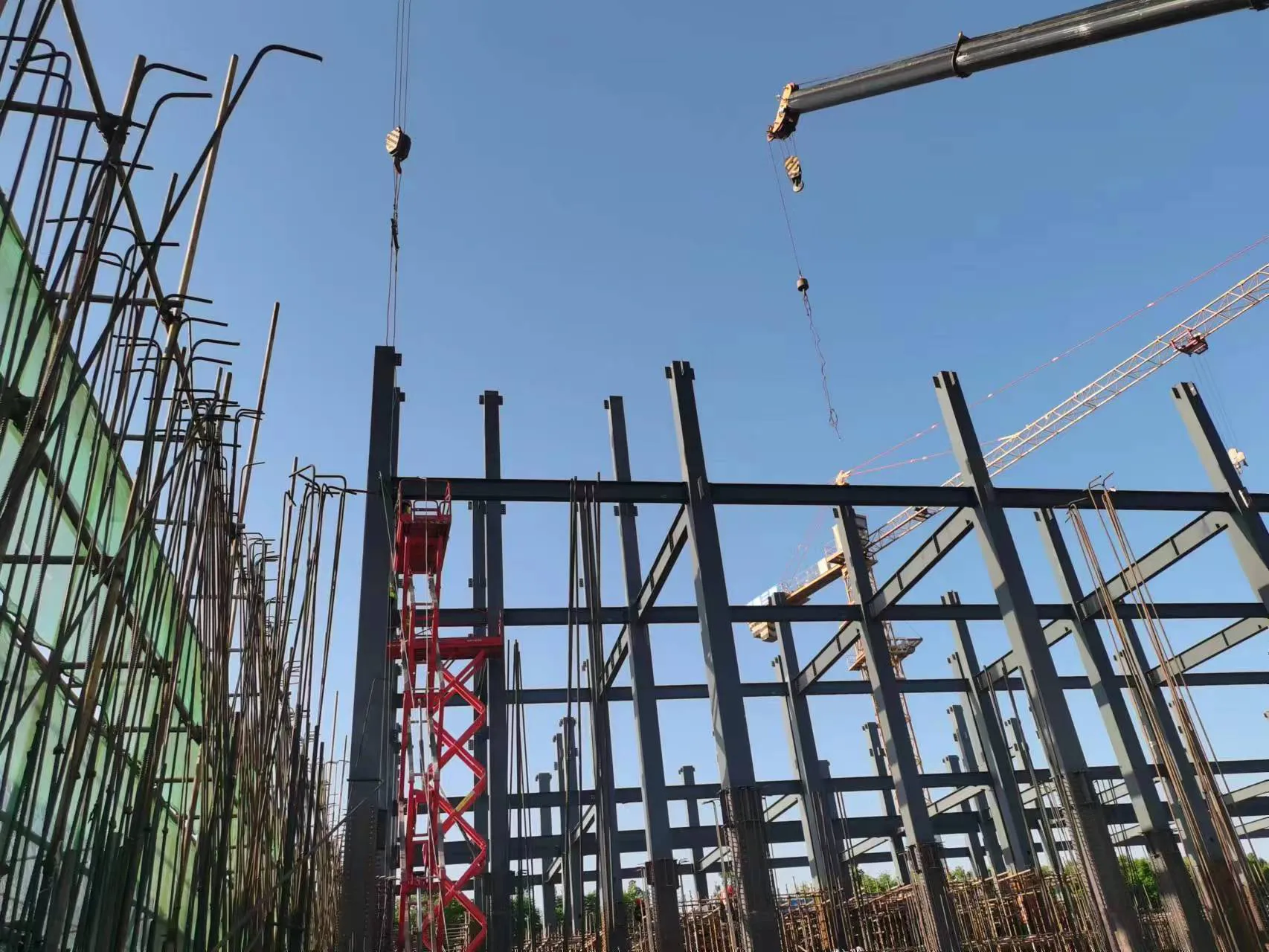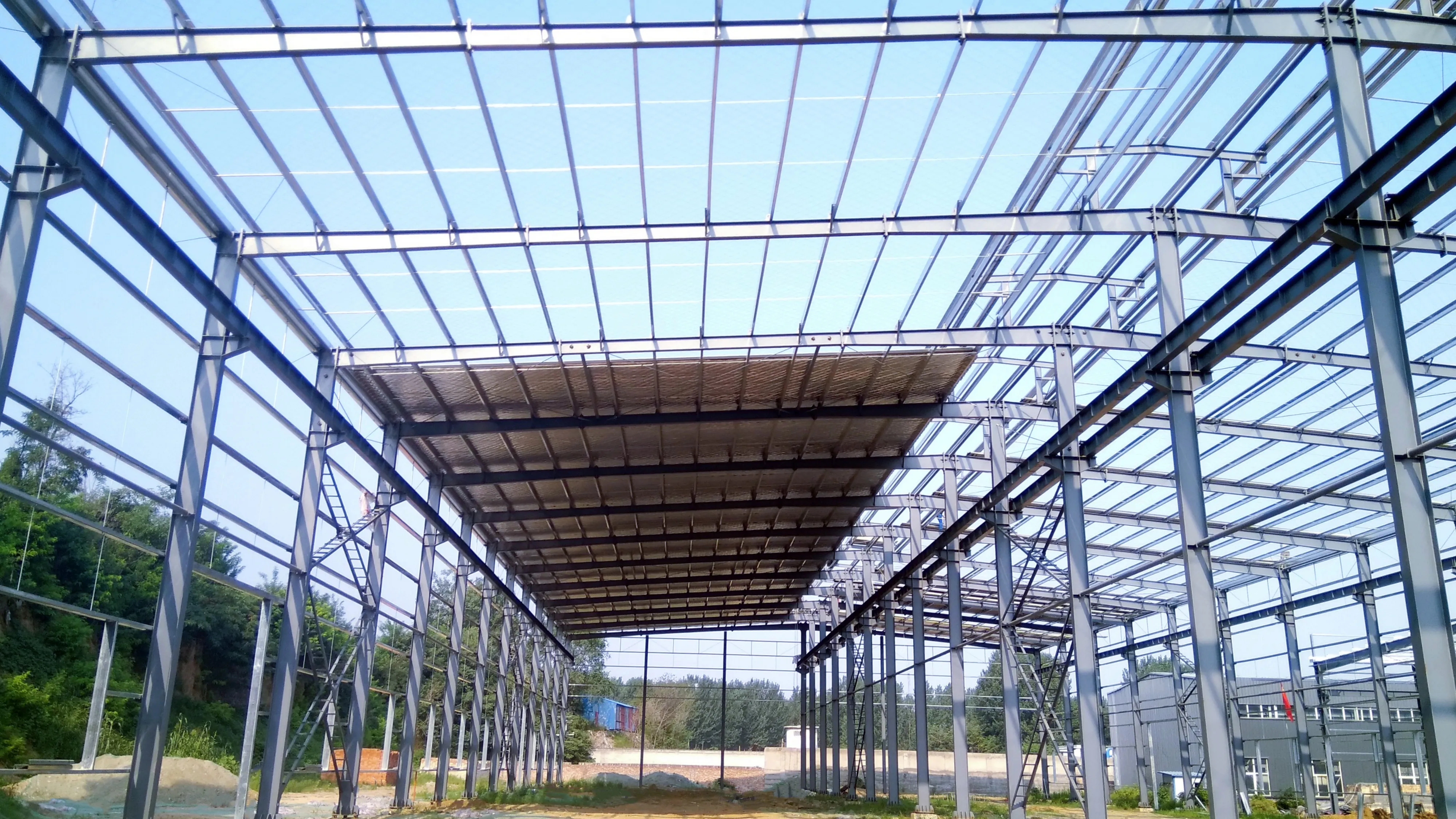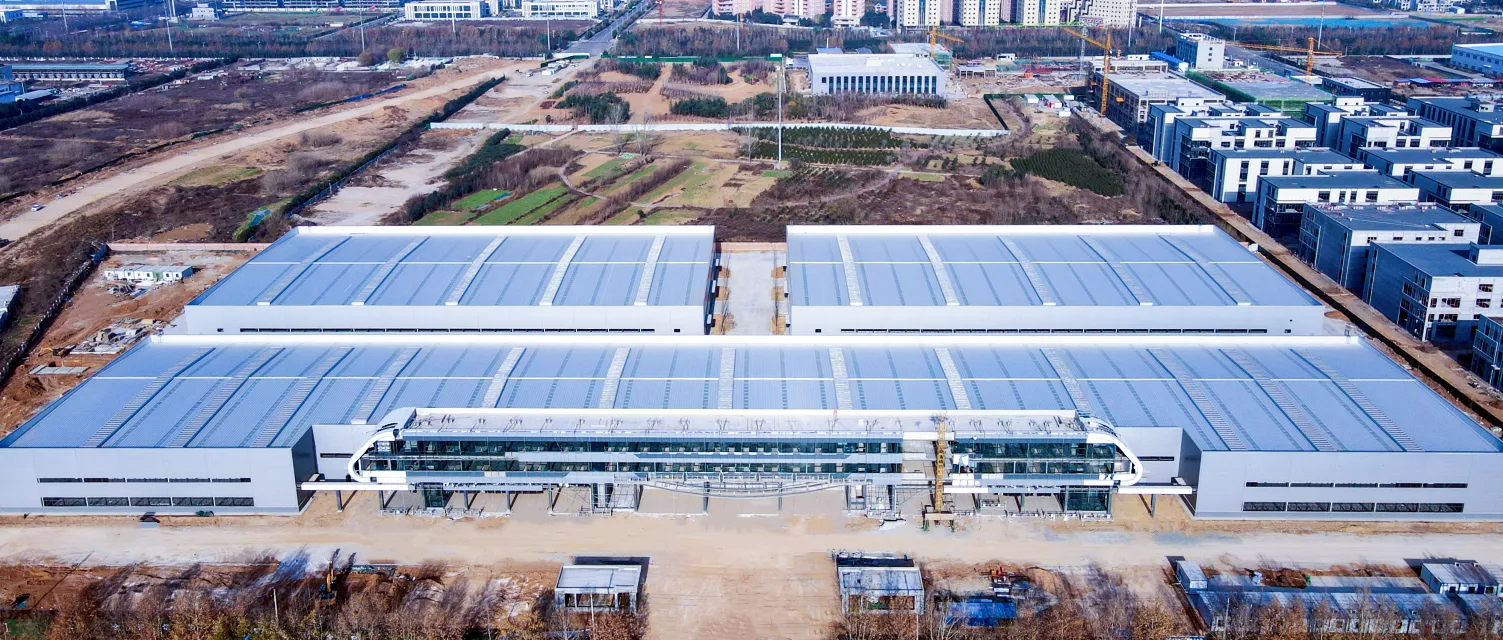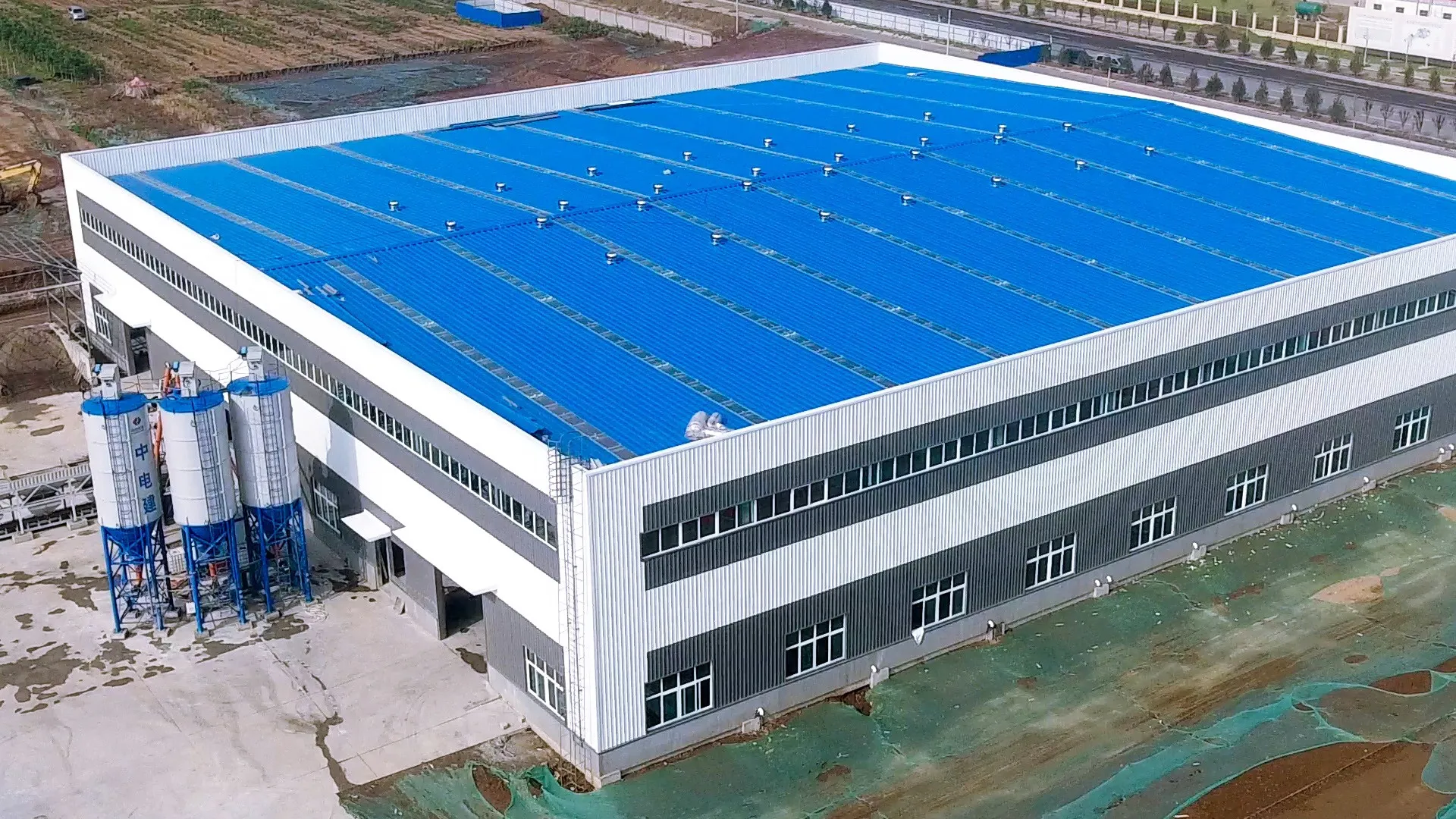Time:2025-03-28 07:07:03 Source:Sanjian Meichen Steel Structure
In modern architecture and engineering, steel structures, with their advantages of high strength, light weight, and ease of construction, have become the material of choice for various projects, including bridges, high-rise buildings, industrial plants, and stadiums. However, the safety and reliability of steel structures are not innate, but are ensured through scientific and rigorous design and precise load-bearing capacity calculations. Steel structure load-bearing capacity calculations are a core part of structural engineering.
They determine whether the structure can remain stable and safe under various loads, preventing component failure or overall structural collapse. This is not just a mathematical problem, but a complex system engineering project involving material mechanics, structural mechanics, elasticity theory, plasticity theory, and engineering specifications from various countries. This article will provide an in-depth analysis of steel structure load-bearing capacity calculations, from basic principles and main calculation methods to key calculation points for specific components, and then to influencing factors, common tools, and engineering applications. It aims to provide readers with a comprehensive and in-depth understanding to ensure the safety and economy of steel structure design.
Calculating the load capacity of steel structures is a complex process that depends on various factors. It requires a solid understanding of structural mechanics, material properties, and relevant building codes. Here's a breakdown of the steps involved and key considerations, but this is not a substitute for consulting with a qualified structural engineer. They are responsible for ensuring the safety and compliance of your structure.
The core objective of steel structure bearing capacity calculation is to ensure that structural components and connections will not fail, yield, or buckle under various design loads, and will continue to meet normal operational requirements.
1.1 Limit State Design Method:
Modern steel structure design generally employs limit state design methods, including:
The bearing capacity limit state: Ensures that the structure or component does not fail or buckle under load and is the primary focus of bearing capacity calculations. This involves factors such as component strength, stability, fatigue, and plastic deformation.
The serviceability limit state: Ensures that the structure meets functional requirements during normal use, including deformation (deflection), vibration, and crack width, and is indirectly related to bearing capacity calculations.
1.2 Loads and Load Effects:
Loads: Forces acting on a structure, including dead loads (self-weight), live loads (people, equipment), wind loads, snow loads, and seismic loads. Calculations must be performed according to the local codes and conditions. Load Effects: Forces generated within a structure by loads, such as axial force, shear force, bending moment, and torque.
1.3 Material Strength and Safety Factor:
Steel yield strength(fy)and tensile strength (fu): Fundamental parameters for the bearing capacity of steel structures, determined through material testing.
Partial Factors: Load and material partial factors are introduced to account for factors such as load and material variability, and calculation model uncertainty, ensuring that the design provides sufficient safety margins.
Different types of steel structural components have different failure modes and bearing capacity calculation methods.
2.1 Flexural Members (Beams):
Flexural Capacity: This primarily considers the strength and overall stability of the member under bending moment. H-beams may experience global instability (lateral-torsional buckling) or local instability (local buckling of the flange or web) when subjected to bending. Shear Capacity: Considers shear yielding or buckling of the web under shear forces.
Deflection Verification: Meets the serviceability limit state requirements and limits deformation.
2.2 Compression Members (Columns):
Axial Compression Capacity: Primarily considers overall instability (compression buckling) and localized instability of the member under axial pressure. The slenderness ratio is a key parameter affecting compression buckling capacity.
Eccentric Compression Capacity: Calculates the strength and stability of the member based on the combined effects of axial force and bending moment.
2.3 Compression and Tension Members (Truss Members):
Tension Members: Primarily verify the tensile strength of the net cross-section (accounting for weakening due to bolt holes or welds).
Compression Members: Calculate as compression members, accounting for compression buckling instability.
2.4 Steel Structure Connections:
Weld Connection Capacity: Verifies the shear, tensile, and compressive strength of the weld. The weld type, size, and quality grade must be considered. Bolted
Connection Capacity: Verify the shear and tensile strength of the bolts, as well as the compressive and shear strength of the hole walls of the connected plates. This includes standard and high-strength bolt connections.
Joint Design: Joints are key to structural force transmission and require detailed design and verification to ensure a clear force transmission path and avoid stress concentration.
The actual bearing capacity of steel structures is affected by a variety of complex factors, requiring comprehensive consideration during design.
3.1 Steel Properties: Yield strength, tensile strength, elongation, impact toughness, etc.
3.2 Component Geometric Dimensions and Cross-Sectional Form: Section modulus, moment of inertia, radius of gyration, slenderness ratio, plate width-to-thickness ratio, etc.
3.3 Component End Constraints: The stiffness of beam-column joints, whether hinged or fixed, significantly affects the stable bearing capacity of the component.
3.4 Initial Defects: Initial bending of the component, manufacturing deviations, installation deviations, etc. 3.5 Residual Stress: Residual stresses generated during welding and rolling can affect the yield and buckling behavior of components.
3.6 Environmental Factors: Temperature fluctuations, corrosion, fatigue loads (e.g., bridge and crane structures).
3.7 Connection Method and Quality: The reliability and construction quality of weld and bolt connections.


The general process involves:
Load Determination:
Calculate dead loads based on material densities and dimensions.
Determine live loads, environmental loads, and other loads based on building codes and site-specific conditions.
Load Combinations: Apply load combinations specified in building codes. These combinations represent different scenarios where multiple loads act simultaneously with varying factors of safety (or load factors). Common examples:
1.4 DL
1.2 DL + 1.6 LL + 0.5 (Lr or S or R) (Lr = Roof Live Load, S = Snow Load, R = Rain Load)
1.2 DL + 1.0 WL + LL + 0.5 (Lr or S or R)
1.2 DL + 1.0 EL + LL + Ss
(These are simplified examples; the specific load combinations and load factors will vary based on the code.)
Structural Analysis:
Develop a structural model of the steel frame (using software or manual calculations).
Apply the factored load combinations to the structural model.
Determine the internal forces (axial forces, shear forces, bending moments, and torques) in each structural member.
Member Design:
Check Capacity: For each member (beam, column, brace), compare the calculated internal forces to the member's design capacity. The design capacity is calculated based on the member's material properties, cross-sectional geometry, and length, using formulas from the relevant building code (e.g., AISC 360).
Design for Tension: Check that the tensile force in a member is less than its tensile capacity (based on yield strength and tensile strength).
Design for Compression: Check that the compressive force in a column is less than its buckling capacity. Buckling capacity depends on the column's length, cross-sectional shape, and end conditions (pinned, fixed, etc.). This is a critical and complex calculation.
Design for Bending: Check that the bending moment in a beam is less than its bending capacity. Bending capacity depends on the beam's cross-sectional shape and lateral bracing.
Design for Shear: Check that the shear force in a beam is less than its shear capacity.
Design for Combined Loading: When a member is subjected to multiple forces (e.g., axial load and bending moment), interaction equations are used to check the combined effect.
Connection Design:
Design the connections between structural members to adequately transfer the loads. This is a crucial aspect of structural design.
Connection design involves selecting appropriate fasteners (bolts, welds) and ensuring they are strong enough to resist the forces acting on them.
Consider failure modes like bolt shear, bolt bearing on the steel, weld shear, and block shear.
Serviceability Checks:
Deflection: Check that the deflections of beams and columns under service loads (unfactored loads) are within acceptable limits. Excessive deflections can cause problems with finishes, functionality, and aesthetics. Building codes specify deflection limits.
Vibration: Check for excessive vibrations, especially in floors, which can be annoying or even structurally damaging.

Buckling: Steel members, especially columns, are susceptible to buckling under compression. Buckling analysis is a critical part of the design process.
Lateral Torsional Buckling (LTB): Beams can buckle laterally (sideways) and twist. This is a common failure mode, particularly for long, slender beams. Adequate lateral bracing can prevent LTB.
Local Buckling: Thin-walled steel members can buckle locally (e.g., the flange of a beam can buckle).
Connection Design: Connections are often the most critical and complex part of steel design. Poorly designed connections can lead to failure.
Software: Structural analysis software (e.g., SAP2000, ETABS, RISA, STAAD.Pro) is essential for complex structures. These programs can automate the analysis process and provide accurate results.
Experience and Judgement: Structural design requires experience and sound engineering judgement. It's not just about plugging numbers into formulas. A structural engineer needs to understand the underlying principles and be able to identify potential problems.
Fabrication and Erection: The design must consider how the steel will be fabricated and erected. Welding and bolting procedures must be carefully specified.
To ensure calculation accuracy and design compliance, engineers must adhere to specific methods and international/national standards.
5.1 Calculation Methods:
Elastic Theory Calculation: This assumes the material is in its elastic operating state and is suitable for strength and stability verification of most components.
Plastic Theory Calculation: For some statically indeterminate structures and components, partial plasticity is allowed to fully utilize the material's potential and improve bearing capacity.
Finite Element Analysis (FEM): For complex structures or special load conditions, specialized finite element software is used for detailed analysis to simulate the structure's actual load behavior and stress distribution.
5.2 Key Design Specifications:
China: "Standard for the Design of Steel Structures" (GB 50017-2017)
USA: AISC Specification for Structural Steel Buildings (ANSI/AISC 360)
Europe: Eurocode 3 (EN 1993)
Other Countries: Australian AS 4100, Canadian S16, etc. These specifications detail material properties, load combinations, component capacity calculation formulas, stability verification, connection design, and more, and serve as the definitive basis for steel structure design.
In modern engineering design, computer-aided design (CAD) and structural analysis software are important tools for improving calculation efficiency and accuracy.
6.1 Commonly Used Design Software:
SAP2000, ETABS, Midas Gen, PKPM: These software programs enable overall structural modeling, load application, internal force analysis, component capacity verification, and cross-section optimization according to the specifications.
Tekla Structures, AutoCAD, etc.: Used for detailed steel structure design and construction drawing preparation.
6.2 Considerations in Engineering Practice:
Conceptual Design: Before detailed calculations, conceptual design is used to determine the appropriate structural form and component layout.
Load Identification: Accurately identify and calculate all possible loads and their combinations.
Model Simplification and Assumptions: While ensuring accuracy, the structural model and boundary conditions should be reasonably simplified. Verification and
Optimization: Calculation results must be repeatedly verified, and the structure optimized as needed to achieve a balance between safety, economy, and rationality.
Integration with Construction: The design should fully consider construction techniques, installation accuracy, and feasibility.
With technological advancements, steel structure bearing capacity calculation is developing towards greater intelligence, refinement, and sustainability.
High-Performance Steels: The application of new high-strength steels, weathering steels, damping steels, and other materials will bring new calculation challenges and optimization potential.
BIM Technology Integration: The in-depth application of Building Information Modeling (BIM) will enable data sharing and collaboration throughout the entire lifecycle of design, calculation, construction, and operation and maintenance.
Artificial Intelligence and Machine Learning: Assist structural engineers with design optimization, defect detection, and risk assessment.
Resilient Design: Emphasizes the structure's ability to recover after extreme events (such as earthquakes and fires), not just prevent damage.

Tension Member: A steel bar with a cross-sectional area (A) of 2 square inches and a yield strength (Fy) of 50 ksi. The tensile capacity (Pn) is approximately equal to Fy * A = 50 ksi * 2 in^2 = 100 kips. After applying a safety factor (or load factor), the allowable tensile load will be lower.
Column: A steel column with a length (L) and a cross-sectional shape that is prone to buckling. The buckling capacity will be significantly lower than the yield strength times the area. The calculation of buckling capacity requires Euler's formula or more advanced equations, considering the slenderness ratio (L/r, where r is the radius of gyration).
Calculating the load capacity of steel structures is a challenging task that requires specialized knowledge and experience. It is essential to consult with a qualified structural engineer for any real-world design project. They can perform the necessary calculations, select appropriate materials, and ensure that the structure is safe and compliant with building codes. Attempting to design a steel structure without proper expertise can lead to catastrophic failures.
Conclusion:
Steel structure bearing capacity calculation is the cornerstone of ensuring building safety, economy, and sustainability. It's more than simply applying formulas; it's a complex process that integrates material mechanics, structural mechanics, engineering specifications, and advanced computational tools. From a deep understanding of limit state design principles, to accurately calculating the strength and stability of beams, columns, connections, and other components, to comprehensively considering various influencing factors and leveraging modern design software, every step is crucial. Through a comprehensive understanding of load-bearing capacity calculations and rigorous practice, we can construct safer, more efficient, and more aesthetically pleasing steel structures, providing solid support for the development of human society. Continuously monitoring the latest industry standards and technological advances will be the only way for every structural engineer to continuously enhance their professional capabilities and meet future challenges.